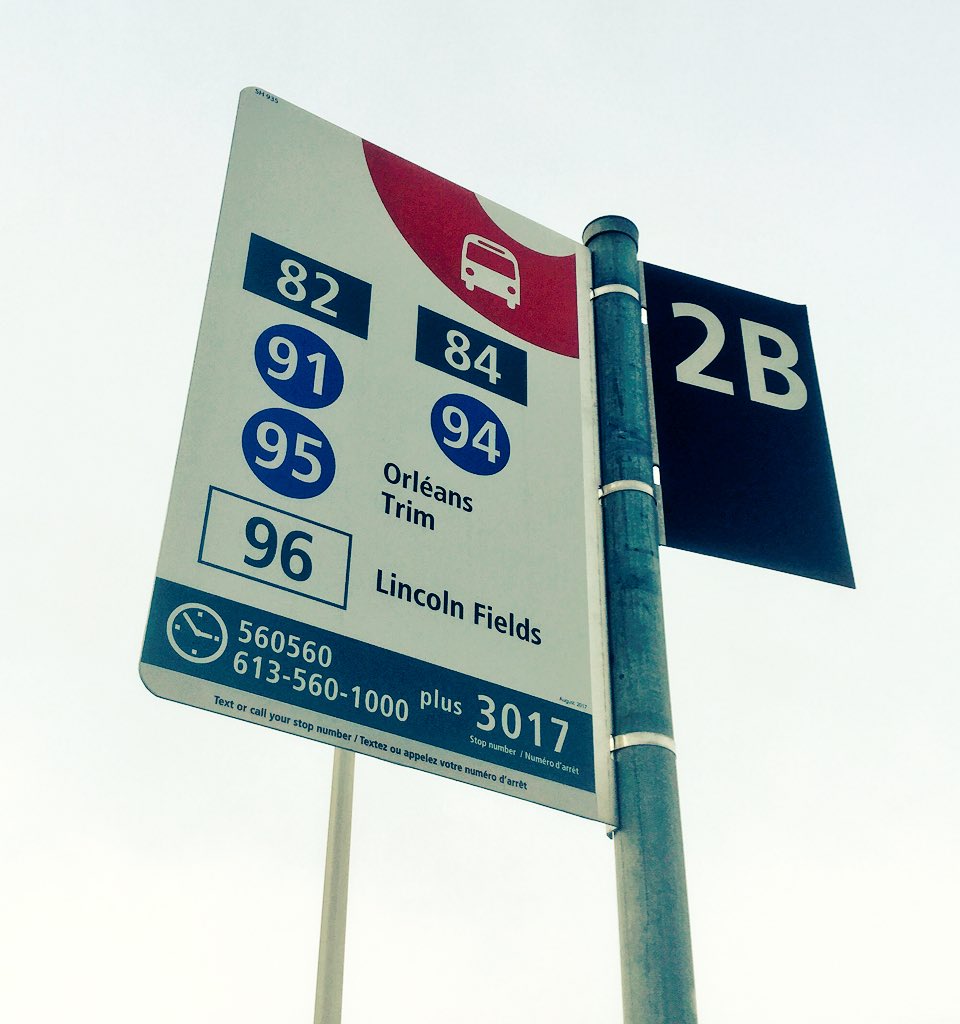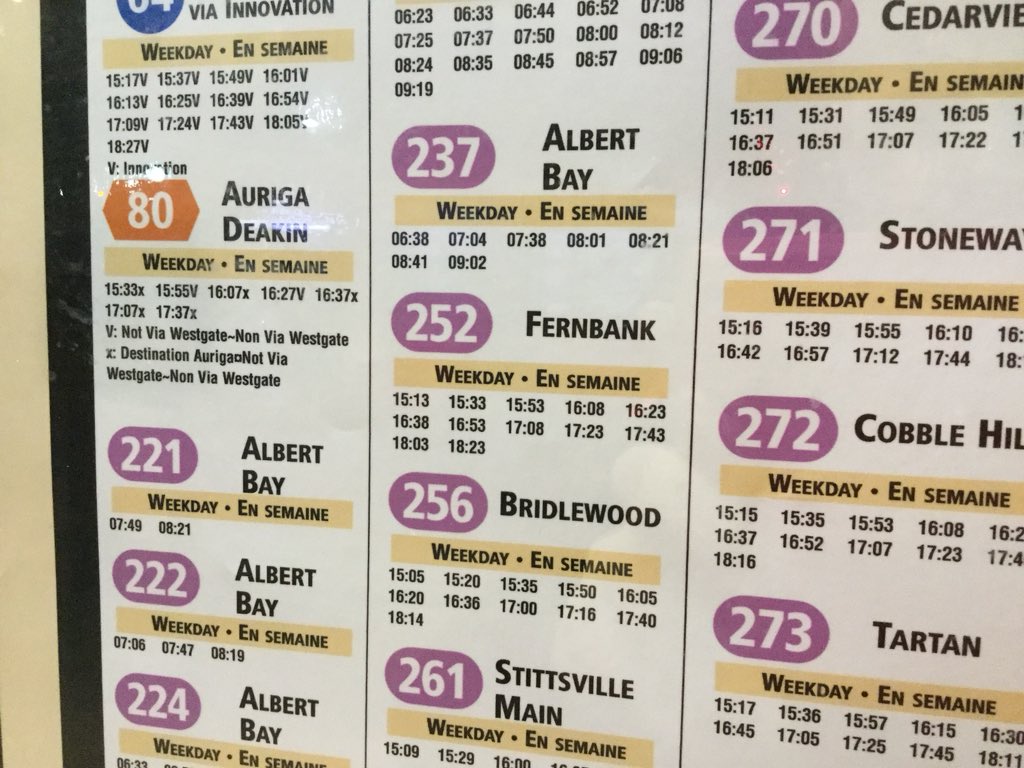Also, it's quite interesting that Ottawa is able to get such ridership at half the population size of Vancouver. Ottawa is basically half way to European levels of transit usage. Something remarkable for a Canadian/US city of a million people. And I'd argue there's so many small fixes they could do with their bus service to boost transit usage substantially yet.
The 2016 Ottawa number is likely heavily influenced by the LRT construction which, by using the transitway, harmed the level of service. Another hidden downside/cost of the BRT to LRT conversion.
At age of 44, and born in Ottawa, so I've witnessed the evolution of the Transitway. Growing up, I lived and breathed BRT.
Indeed, the construction eliminated the wonderful BRT temporarily.
...That first class BRT treatment. Ottawa has had the world's first BRT (1973) and then world's largest BRT (1983) for many years. The fancy modern fire-engine-red transitway stations with computerized next-bus arrival terminals in 1983. Public transit was treated like a first class citizen by Ottawa, with loving attention to route numbers.
...The latest tech. In 1983 at all the Transitway BRT stations you had CRT computer terminals showing next bus arrval! That's 35 years ago. Electronic next-bus arrival screens. Thirty Five (35) Years Ago. Transitway buses actually ran really tight to the clock
almost Japanese-style timetable precision on Transitway.
(Many of us were studiously picky, I always complained loudly as a kid if it rarely deviated more than a few mins. Transitway made it easy for bus drivers to adhere to a timestable without stressing bus drivers too much)
...That subway frequent service. If you were on the transitway, buses were guaranteed to be frequent and fast.
At peak period, buses whooshed by every 2-3 minutes and you could just step onto any bus heading in the downtown direction without caring about the route number -- they would be going in the correct direction until at least downtown (or the Hurdman transfer station -- BRT fork/crossroads)
...That fast bus trip felt like a freeway for buses. Often, the buses whooshed 70kph down the straightaways between Transitway bus stops. I often got frequently whisked between downtown and St. Laurent Mall in roughly only 15 minutes, on time to watch the movie showtimes, whether it was Gremlins or Short Circuit or such.
The small section of bus-congested downtown bus lane was a bone of contention at peak (surface crossings much like the downtown section of Calgary C-Train) but never really truly became truly intolerable until recent decades.
...That easy signage. Even back in 1983, route number signage was extremely easy to read, -- you could read route numbers from almost one bus stop down the street (making it much easier to decide which direction to walk if you walk to a street and find yourself between two suburban bus stops).
I can't as easily identify bus routes on Toronto bus stops (nor Hamilton) from across the street,
while it was always easy from a distance in Ottawa! ... Even that unsheltered rural bus stop pole had Canada's biggest bus stop signage.
Sterling five-star route number signage department... Say and complain about OC Transpo, but big kudos credit where due to the hawkish bus stop signage department at OC Transpo that has, ceaselessly nitpicked the entire OC Transpo network to minimum route-number accuracy, readability, and clarity standards far beyond almost any North American city, par excellencé, bar none, full stop.
Rural bus stop to suburb bus stop to trantitway bus stops, the bus stop signage was always consistent and clear on a guaranteed minimum quarter-square-meter-size sheet metal (guaranteed minimum surface area) that never got lost in background clutter of telephone poles, road signs, etc.
Very clear bus shelter posters... When bus shelters existed, they always had pretty delightful detail (most of the time). Sometimes even computer printouts (dot matrix back then) in the 1980s of timetables on small slightly-below-eye-level affixments to unsheltered bus stop poles! Now they're fancy like this:
Never felt lost in the pre-cellphone days. I never felt lost in Ottawa as a transit rider - I could confidenty at 10 years old (as a deafie unable to make phone calls until I was age 15) - take a bus anywhere in Ottawa, knowing I'd easily get home with the first-class treatment of route signage everywhere including bus network posters in nearly all bus shelters -- even far away from the BRT. Maps were attached to
rural bus poles, for chrissakes!!!
You've got that tottally damn right... temporarily shutting down the BRT and detouring it over the main road network was royally painful, so I'm not surprised that ridership plummeted slightly when LRT construction shut down the BRT for construction. To Ottawa transit users, it almost feels like shutting down one side of Yonge Line for several years.
But worth it... Excited for LRT!!! 






